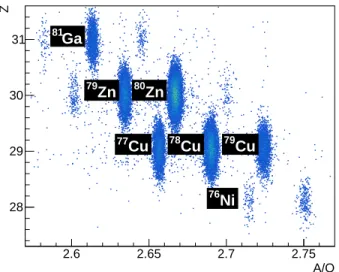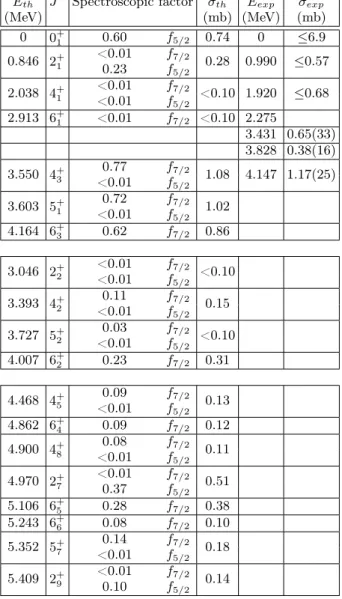Nuclear structure of $^{76}\mathrm{Ni}$ from the ($p,2p$) reaction
Texte intégral
Figure




Documents relatifs
Another difficulty appearing in many works on equations involving cross diffusion is the difficulty, once a priori estimates have been established, to write down an approximation
The radiated cross sections and asymmetries were tabulated as input for the Monte Carlo code, while the Born cross sections and asymmetries were compared with the Monte Carlo output
Level schemes were reconstructed using the γ-γ coincidence technique, with tentative spin-parity assign- ments based on the measured inclusive and exclusive cross sections..
Besides the observation of states that were expected to be produced in the knockout of protons from the p − sd shell, other states with likely high spin value (J > 5/2) and
Effects of the nuclear structure of fission fragments on the high-energy prompt fission γ-ray spectrum inH. 235 U(n_th,
1 F l2 based on different models will then give some indications about the validity of the particular model used.. The general agree- ment with the experimental
This interaction is used in a Hartree-Fock calculation of 40Ca to study the density, the single particle energies and the shell-model potential for various compressibility
Therefore, a second (p,pn) experiment was undertaken in the winter of 1982, which was designed primarily as a study of deep-hole states. Proton energies were measured with a detector